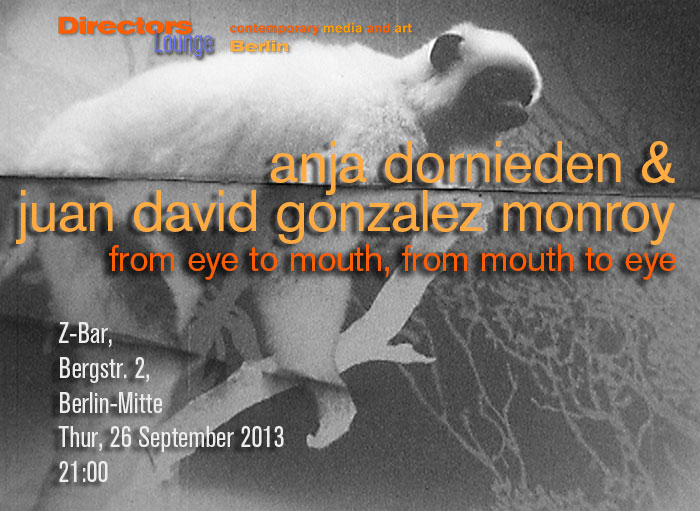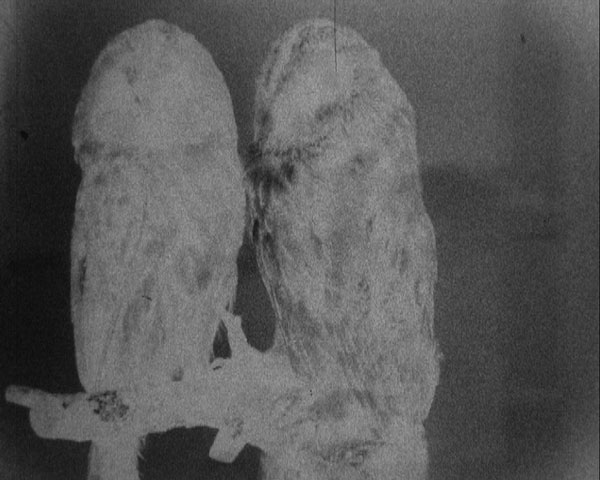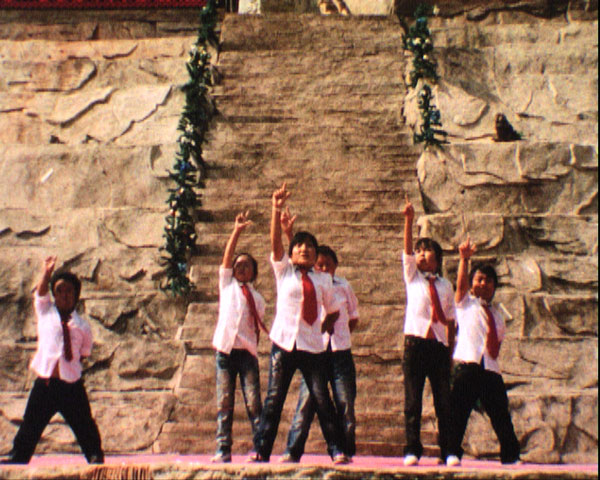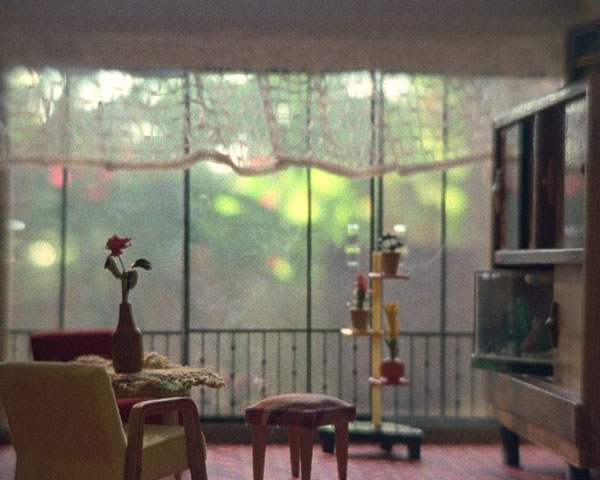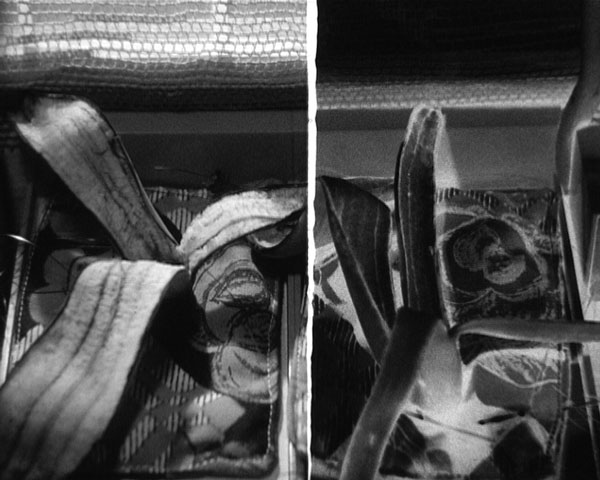directors lounge monthly screening
anja dornieden and juan david gonzalez monroy
from eye to mouth, from mouth to eye
Thursday, 26 September 2013
21:00
Z-Bar
Bergstraße 2
10115 Berlin-Mitte
Anja Dornieden and Juan David González Monroy have worked together for several years, dedicating themselves to working with analog film in the field of experimental cinema. In their films they often address questions that relate to society, with phenomena ranging from the relation between hypnosis and psychoanalysis, to the nostalgia for East-German dollhouses, and to spatial imaginations connected to the idea of the private sphere. As members of Labor Berlin, they're able to develop and print their own films. For them working with film also means extending the possibilities of single film projection towards a layering of projections, which becomes itself a performance or a form of Expanded Cinema.
In certain ways, Dornieden and González Monroy, who also work under the name OJOBOCA (Eyemouth), present very open visual essays with their films. In a very late-modernist gesture, they recombine found images and texts. However, it is neither the technique of the found footage film, nor of the "objet trouvé" that they touch upon, but a technique of contemporary anthropological collection of materials recombined in rather surrealist ways; something not so very different from a number of more documentary-oriented filmmakers, such as Robert Flaherty and Robert Gardener. As an artist, are you permitted to create film-essays that are much less centered on a narrative and a foregone conclusion as is the case with the above-mentioned classical documentarists? Is it valuable to touch on anthropological themes by confronting found or collaged text with a collection of visuals related to those themes? Anja and Juan may prove that in their work the material of analog film helps them achieve those ends. It is the almost tactile quality of analog material, combined with a very fine sense of composition and of the assemblage of images over time through editing, which allows the artist couple to create mind-provoking pieces, without providing easy interpretations.
Alain de Botton tries to bring back to the contemporary philosophical discourse the discussion about idealization in architecture and the advantages of the creation of beauty in homely designs. (The Architecture of Happiness 2006). He quotes Friedrich Schiller (About the Aesthetic Education of Man) to point out the positive effect that a beautifully or idealistically designed surrounding may have on our virtue. Ironically, Dornieden and Gonzalez Monroy, start their film "Eigenheim" with a similar quote about human virtue by Erich Honecker. The film uses close-ups to explore a seemingly endless number of dollhouses of East German origin, which have now become collectors' items. Put together with much love and care by an individual (the parent or child), those toys were mass produced and made to resemble as much as possible the also industrially produced GDR home designs. While this film's soundtrack, which consists of the owners' voices, has traditional documentary qualities, "A home Inside", a different film on a similar theme, contains a more disturbing soundtrack. This film, screened with three 16mm projectors, is concerned with images of "good domestic design", while the soundtrack that is spoken by a virtual voice lingers on a reflection of a related defect or infection that must be overcome. For the viewer, it remains ambivalent, whether the good interior design may help as a kind of cure as has been stated by de Botton, if it is the actual cause of the defect. What is clear from the combination of sound and images is that the film addresses imaginations rather than concrete domestic places, imaginations, which themselves may have also been propelled by the domestic design industry or the media.
A different theme is addressed by "The HandEye (The Bone Ghosts)". This film is an homage to a séance in Vienna where Sigmund Freud and Robert Musil summoned the ghost of Franz Anton Mesmer, the forefather of hypnosis, as well as an exploration of three museums in Vienna: Der Narrenturm, das Bestattungsmuseum and the Naturhistorisches Museum. The filmmakers have rendered the film in a flickering alteration between positive and negative footage, sometimes partly splitting the same image into negative and positive. As a soundtrack they've used a mechanical voice that suggests hallucinations. Again, the film both appears to be suggestive, and to ironically question occult practices, and it is up to the viewer to create their own story and meaning, even if they know more about the background and the story of its making.
Curated by Klaus w. Eisenlohr
Artist Links:
http://www.ojoboca.com/
Links:
Directors Lounge
http://www.directorslounge.net
Z-Bar
http://www.z-bar.de
 Back Back
|
